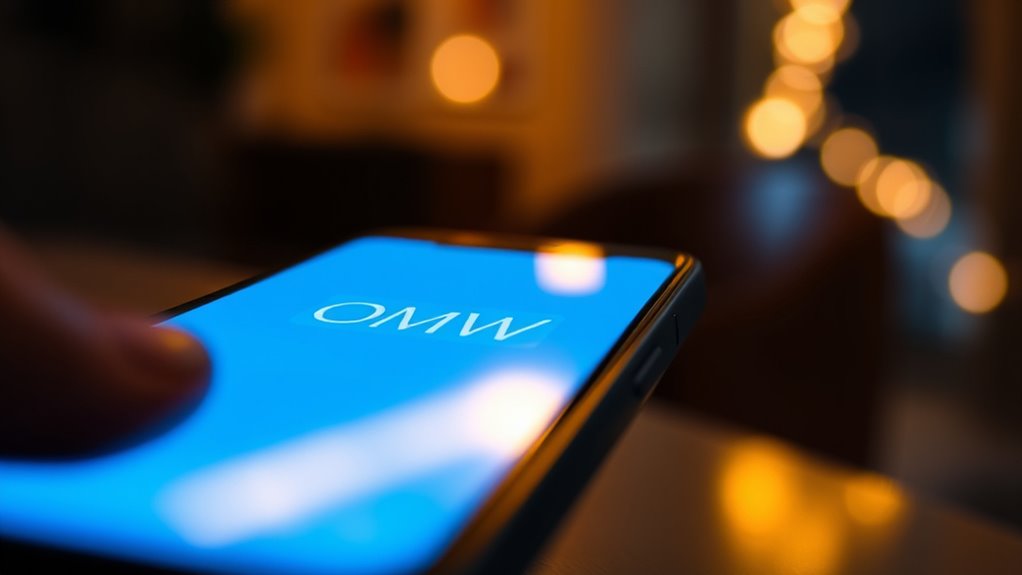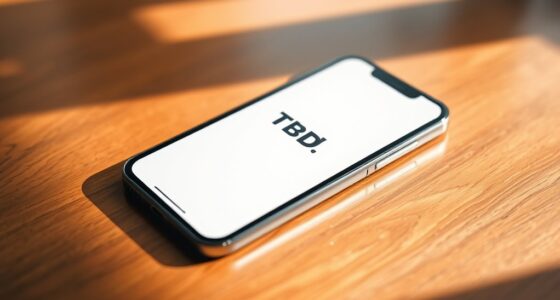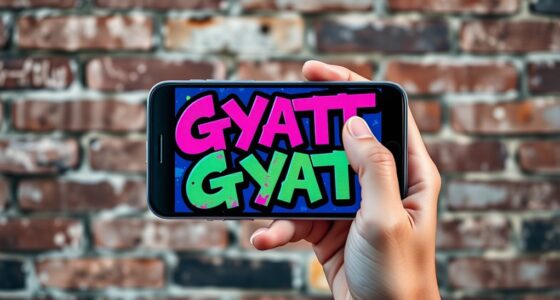OMW stands for “on my way” and is a common abbreviation used in digital chats and texts to quickly tell someone you’re heading to a location or meeting. It’s mostly used in casual conversations among friends and family to save time and keep communication efficient. There are variations like “Waaaay” or similar acronyms such as BRB or GTG. To avoid misunderstandings, it’s important to contemplate the context. If you keep exploring, you’ll find more about how and when to use it properly.
Key Takeaways
- OMW stands for “on my way,” indicating someone is en route to meet or arrive somewhere.
- It is commonly used in digital messaging to quickly update others about travel status.
- OMW originated from text messaging and online chat as a shortcut for faster communication.
- It is mainly used in casual contexts with friends or family, not typically in formal settings.
- Variations like “On My Waaaay” or similar acronyms serve the same purpose of conveying movement.
The Origin and Common Usage of OMW
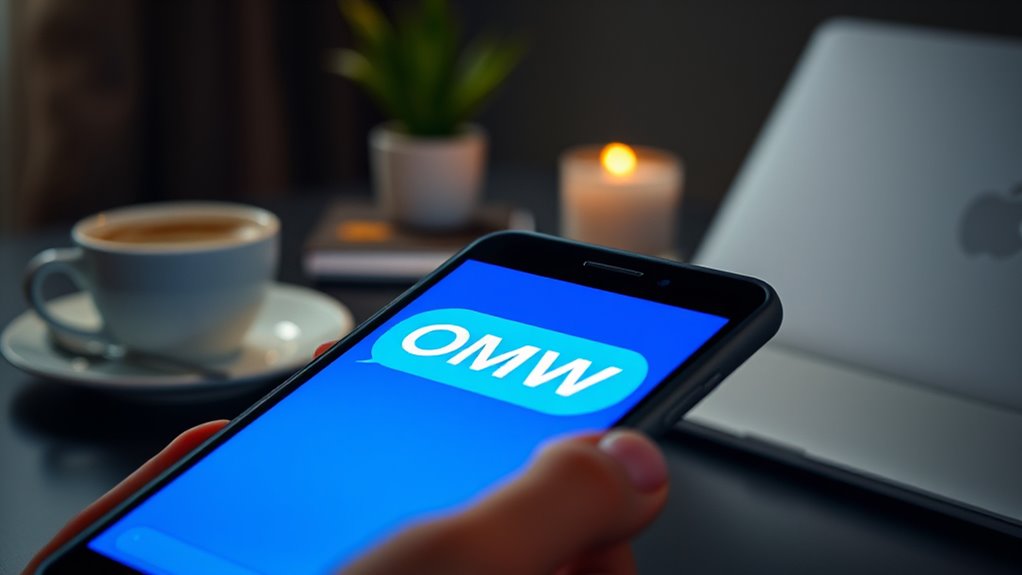
The abbreviation OMW stands for “on my way,” and it has become a popular way to quickly let someone know you’re heading somewhere. Its history background traces back to the rise of digital communication, where brevity is essential. The linguistic origins of OMW are rooted in text messaging and online chatting, where abbreviations help save time and space. Originally, such acronyms emerged from the need for quick, efficient exchanges, especially in fast-paced conversations. Over time, OMW gained widespread usage across various platforms, becoming a common shorthand for indicating you’re en route. Today, it’s recognized globally, transcending language barriers and age groups, and remains a key part of modern digital language. Its simplicity and clarity make it a staple in everyday texting. Additionally, cookie categories like necessary and functional cookies have played a role in supporting the seamless transmission of such abbreviations across devices and platforms.
How OMW Is Used in Everyday Texting
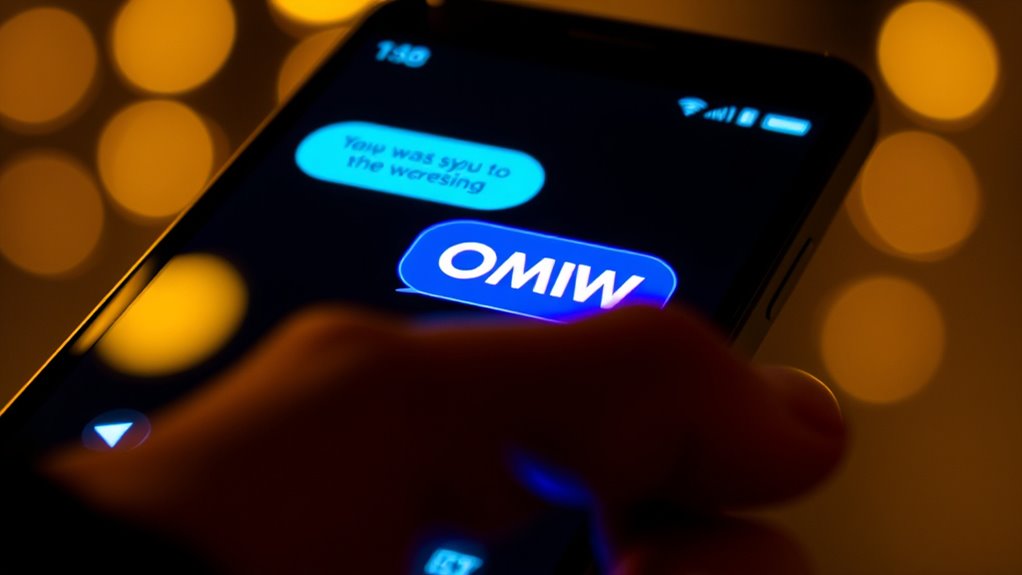
In everyday texting, OMW is a quick way to inform someone that you’re on your way or heading to meet them. People often use it to coordinate plans casually, ensuring others know you’re nearby or en route. While OMW is common among friends and family, it can also be useful in emergency situations, where quick updates are essential. In fact, understanding common abbreviations like OMW can improve digital communication efficiency and clarity. However, in formal communication, OMW might be less appropriate, as it can seem too informal or unprofessional. Nevertheless, most people understand its meaning and use it to save time and keep conversations efficient. When texting, using OMW helps streamline communication, especially when you’re short on time or need to reassure someone you’re almost there. Just be mindful of your audience and the context.
Variations and Similar Acronyms to OMW

Have you noticed other acronyms that serve the same purpose as OMW or add variety to your texts? In the slang evolution of digital communication, many alternatives exist. These variations keep your conversations fresh and expressive. Here are some common options:
- OMW – Original, but variations like “On My Way” or “On My Waaaay” (playful)
- BRB – Be Right Back
- GTG – Got To Go
- TTYL – Talk To You Later
While OMW is popular, exploring these options helps you stay current and versatile in your texting style. They all serve similar purposes but add different flavors, reflecting how digital communication constantly evolves. Additionally, understanding relationship dynamics can help you interpret the context behind these abbreviations when used in personal conversations.
When to Use OMW Appropriately
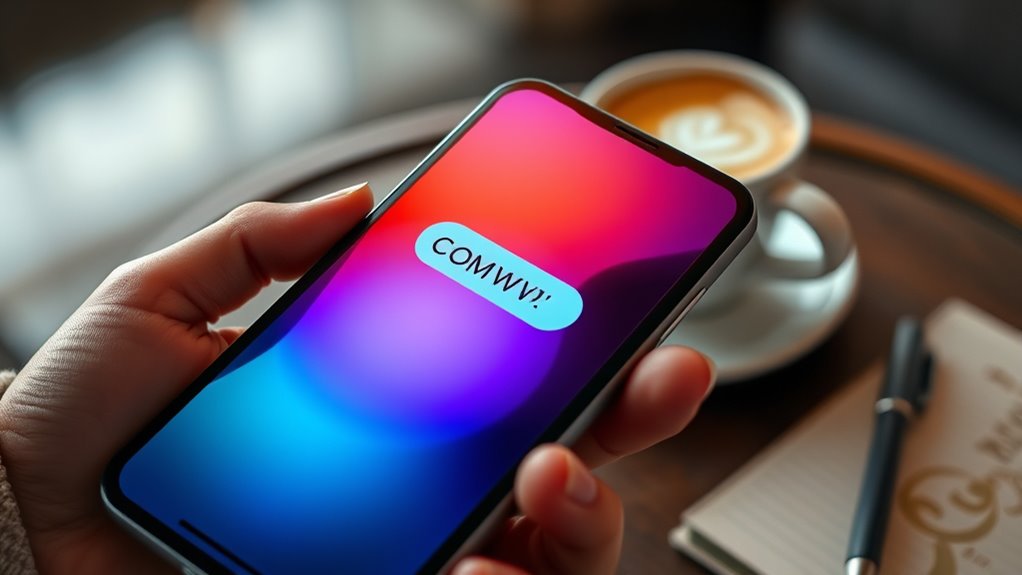
Knowing when to use OMW can make your messages clearer and more appropriate. In casual conversations with friends or family, it’s generally fine to use OMW to show you’re on your way. However, cultural differences may influence how this acronym is perceived; some cultures might find it informal or disrespectful. In professional settings, avoid using OMW unless you’re certain your colleagues are comfortable with informal language. When communicating with coworkers or clients, opt for more formal phrases like “heading there now” to maintain professionalism. Timing also matters—use OMW when you’re genuinely en route and want to inform someone promptly. Being mindful of context guarantees your message is understood correctly and reflects respect for the situation and the people involved. Additionally, understanding user preferences can help you decide when abbreviations like OMW are appropriate.
Misunderstandings and Mistakes With OMW

Using OMW without considering how others might interpret it can lead to misunderstandings. Cultural differences play a big role, as what seems casual to you might feel too informal or even confusing elsewhere. Misusing OMW can also cause issues if you’re communicating in a formal context, where abbreviations may seem inappropriate. To avoid mistakes, keep these points in mind:
- Know your audience – Use OMW with friends, but avoid it in professional settings.
- Respect cultural norms – In some cultures, abbreviations can be seen as disrespectful or lazy.
- Understand tone – OMW is informal; don’t assume everyone perceives it the same way.
- Clarify when unsure – When in doubt, write out “on my way” to prevent misunderstandings.
Alternative Ways to Say You’re on Your Way

When you want to tell someone you’re on your way, there are several alternatives to using OMW that can suit different tones and contexts. If you want to share your travel plans casually, you might say, “Heading over now” or “On my way.” For more urgency, expressions like “Almost there” or “En route” work well. If you want to sound friendly and informal, try “Be there soon” or “Getting ready to leave.” When you’re in a hurry, phrases like “Running late but coming” or “Just leaving now” communicate your intent clearly. These options help you adapt your message based on how quickly you’re arriving and the tone you want to set, ensuring your message fits the situation perfectly. Additionally, understanding sustainable living practices can inspire more mindful choices in your daily routine.
The Importance of Context in Interpreting OMW
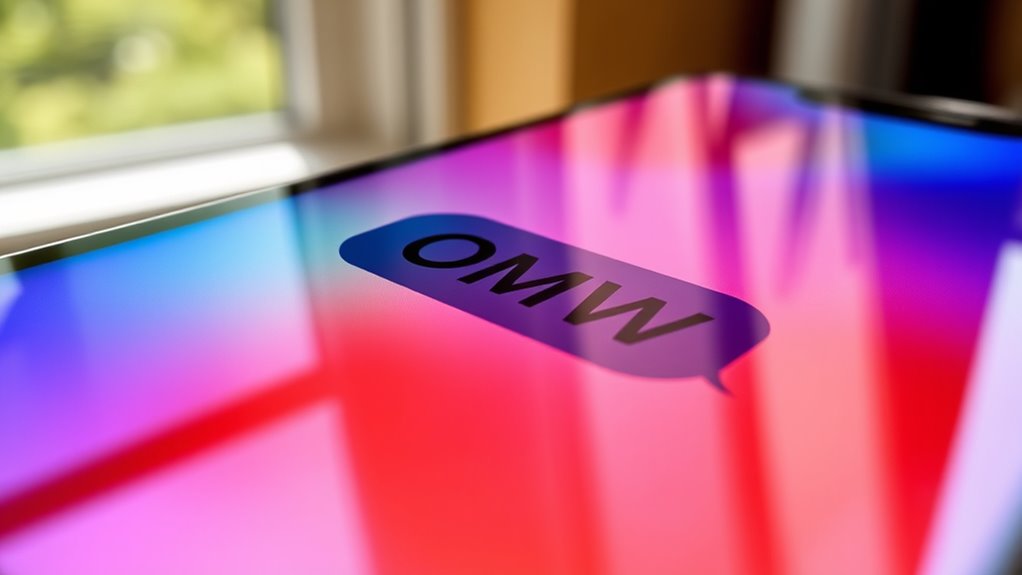
The meaning of OMW can shift considerably depending on the situation, making context key to understanding the message accurately. Cultural differences influence how you interpret OMW, as what seems casual in one culture might be urgent in another. Tone interpretation also plays a crucial role; a friendly message might seem playful or serious depending on the sender’s style. To grasp the true intent, consider these factors:
- The sender’s cultural background
- The relationship between you and the sender
- The overall tone of the conversation
- The urgency implied by the message context
Additionally, understanding personality traits can help you better interpret the sender’s communication style and intent.
Frequently Asked Questions
Is OMW Used in Professional or Formal Communication?
You probably shouldn’t use OMW in professional or formal communication because it’s too casual. In these contexts, maintaining an appropriate tone is important, and abbreviations like OMW can seem unprofessional or too informal. Stick to full words like “on my way” to guarantee clarity and respect the formal setting. Using proper language helps you come across as respectful and serious, which is essential in professional interactions.
Can OMW Be Misunderstood in Different Cultural Contexts?
Like a universal language with hidden dialects, OMW can be misunderstood across cultural boundaries. Regional differences and cultural misinterpretations might cause confusion—some might see it as impatience, while others interpret it as enthusiasm. Be mindful when using OMW internationally, because in some contexts, it could lead to unintended signals. Clarify your intent if you’re unsure, ensuring your message remains clear despite language nuances.
Are There Age Groups That Prefer Using OMW More Than Others?
You’ll notice that teens tend to prefer using “OMW” more than older age groups because it’s a popular part of teen slang and texting trends. Younger people often adopt abbreviations quickly to communicate efficiently and stay current with digital language. As a result, teens are more likely to use “OMW” frequently, while older generations might not use it as often, preferring more formal or complete phrases.
How Does OMW Compare to Similar Abbreviations Like IMHO or ASAP?
Like a quick flash in a spy movie, OMW signals you’re on your way, distinguished from abbreviations like IMHO or ASAP, which express opinions or urgency. Abbreviation differences highlight slang usage: OMW is about movement, IMHO shares thoughts, and ASAP demands prompt action. You use OMW when you’re heading somewhere, making it more about physical location than the other abbreviations’ emotional or time-sensitive contexts.
What Are Common Mistakes People Make When Using OMW?
You often make misspelling errors or overuse abbreviations like OMW, which can confuse your message. People sometimes forget to capitalize it or type it incorrectly, losing clarity. Overusing OMW in every message can also seem lazy or impatient. To avoid these mistakes, use the abbreviation sparingly, double-check spelling, and make certain your context makes your intent clear. This helps keep your communication effective and easy to understand.
Conclusion
Understanding OMW is like knowing the secret handshake of texting—simple yet essential. While it’s quick to send, its meaning depends on context, just like life’s many conversations. You might use it to share excitement or reassurance, but misinterpretation can happen if you overlook the nuances. So, next time you see OMW, remember it’s more than just three letters; it’s a bridge between words and intentions, connecting you to others in a single, meaningful message.
